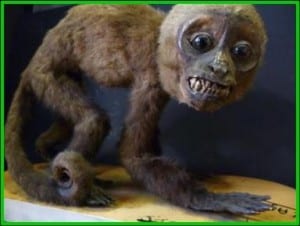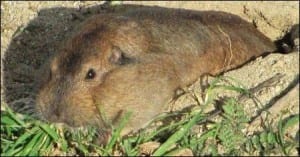Specimen of the Week: Week Seventy-One
By Emma-Louise Nicholls, on 18 February 2013
 At the Grant Museum of Zoology we pride ourselves on our accessibility, both in terms of the specimens and the staff. The staff office, for those of you who have yet to visit or are perhaps unobservant, is in the Museum itself. One of my favourite sentences that I use on a pretty regular basis (basically any time I can slip it in, I do) is “If you need me, I’ll be behind the rhino”.
At the Grant Museum of Zoology we pride ourselves on our accessibility, both in terms of the specimens and the staff. The staff office, for those of you who have yet to visit or are perhaps unobservant, is in the Museum itself. One of my favourite sentences that I use on a pretty regular basis (basically any time I can slip it in, I do) is “If you need me, I’ll be behind the rhino”.
We love fondling things at the Grant Museum and host numerous activities each term that allow hands-on sessions with the specimens. A fantastic facility that few other Museums are physically able to offer due to the spider web of red tape that we at UCL merrily skip passed as we form part of a university based teaching collection. However, handling specimens and allowing them to be handled by others comes with its drawbacks. Things can and sadly do get broken and on occasion, things go missing. Fortunately, in my two years of service I have only ever known laminated images of animals from the activity sheets to go missing and they have nearly always been located in the mouth of a small child. However one such animal that would presumably fit in your pocket is this one. This week’s Specimen of the Week is…
**The Pocket Gopher**

Eastern pocket gopher skeleton (Geomys sp) at the Grant
Museum of Zoology. LDUCZ-Z2794
1) There are three separate species of pocket gopher, Attwater’s, Baird’s, and the plains pocket gopher. As we are currently not 100% sure to which species our specimen belongs, I shall give you a late Valentine’s Day treat and tell you about all three. Ooooh I know. I am generous.
2) We can think of the three pocket gopher species as brothers if you like. Related but all different in their own ways. We shall call them by their common names as if they were their first names. Plains is the most adventurous child and wandered far across the USA and up into Canada. Attwater is the youngest child, and the one that never left home and thus has a small range, only found in Texas. Baird was the ‘middle child’ that enjoyed travelling like his older brother but was still a family man at heart so whilst he ventured across the USA, he never got as far as Canada.

A gopher checking out the surroundings.
Image taken by J. Tchagbele.
Taken from www.commons.wikimedia.org
3) The oldest child Plains, as his name may well suggest to you, likes to live in open spaces such as prairies, pastures, and agricultural areas. As long as the soil is deep and moist, Plains is a happy chappy. Unfortunately for both Plains, and humans, Plains also likes to dig up golf courses, lawns, and err… cemeteries. Whoops. Plains is fossorial, which is a super word which means that he lives in burrows. He is great at digging and will build an extensive tunnel system, normally in the spring or autumn. Although this job as an soil architect has him working the night shifts when it’s cooler for such hard manual labour, he is an energetic soul and subsequently can also be regularly seen during the day.
4) Baird, like his brother, also prefers prairies and grasslands, anywhere where the topsoil is at least 10 cm in depth. Baird is also fossorial and in fact, rarely leaves his burrow. But then if you’d spent all the time and effort it takes to dig a home of up to 80 m of tunnels, you’d probably want to make the most of it too. Baird is a neat chap, and has separate areas assigned for separate activities with areas designated for foraging tunnels, food storage, and nesting. How neat and tidy. Sometimes I wish my partner was a pocket gopher. Baird looks after himself as well as his home and has a healthy diet of roots, stems and leaves.
5) The youngest child Attwater, likes sandy soils of bunchgrass or sometimes silty clay loam soils. Unlike his more geometrically inclined brothers, Attwater doesn’t go for the traditional pocket gopher style linear burrow, but instead excavates a somewhat quirky convoluted pattern that often criss-crosses over an area.

Gopher with full cheek pouches. Image taken by Davefoc.
Image taken from www.commons.wikimedia.org
Additional fact number 6) (Because squeezing three species into five points is silly). Due to both their diet and their burrowing habits, all three pocket gopher species are important to the ecology of the environment. Sadly for them, though happily for the ecosystem balance, they provide tasty prey items for predators in the area. Their tunneling habits have important affects on the soils, microtopography (lay of the land on a small scale..), habitat heterogeneity, diversity of plant species, and primary productivity. Which is lots of science speak to basically say, they’re very important little furry critters.
Emma-Louise Nicholls is the Museum Assistant at the Grant Museum of Zoology
 Close
Close

